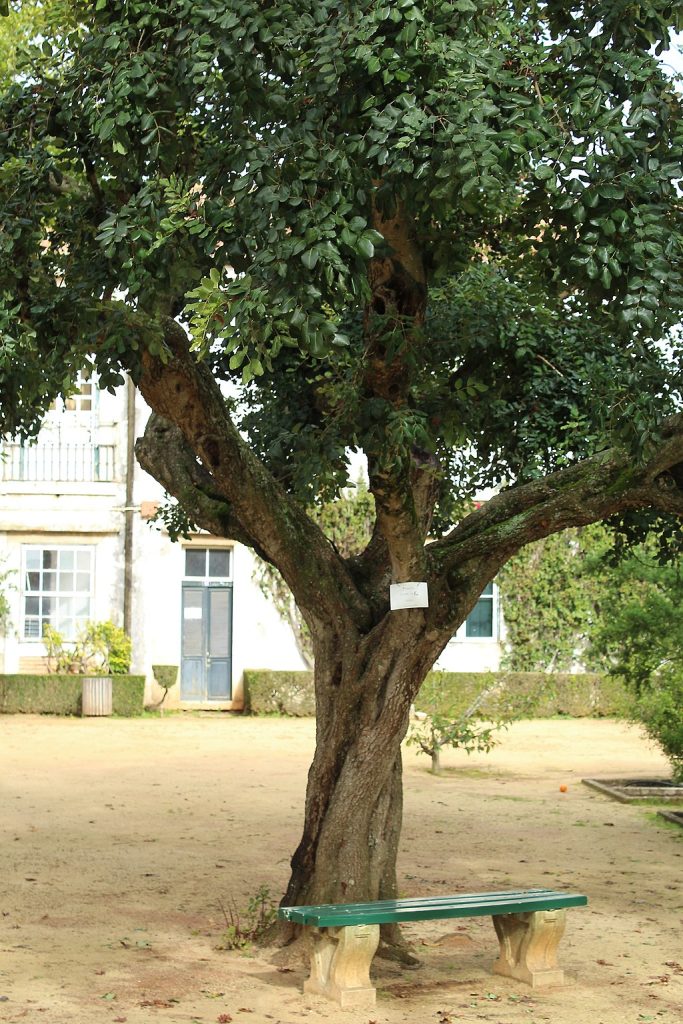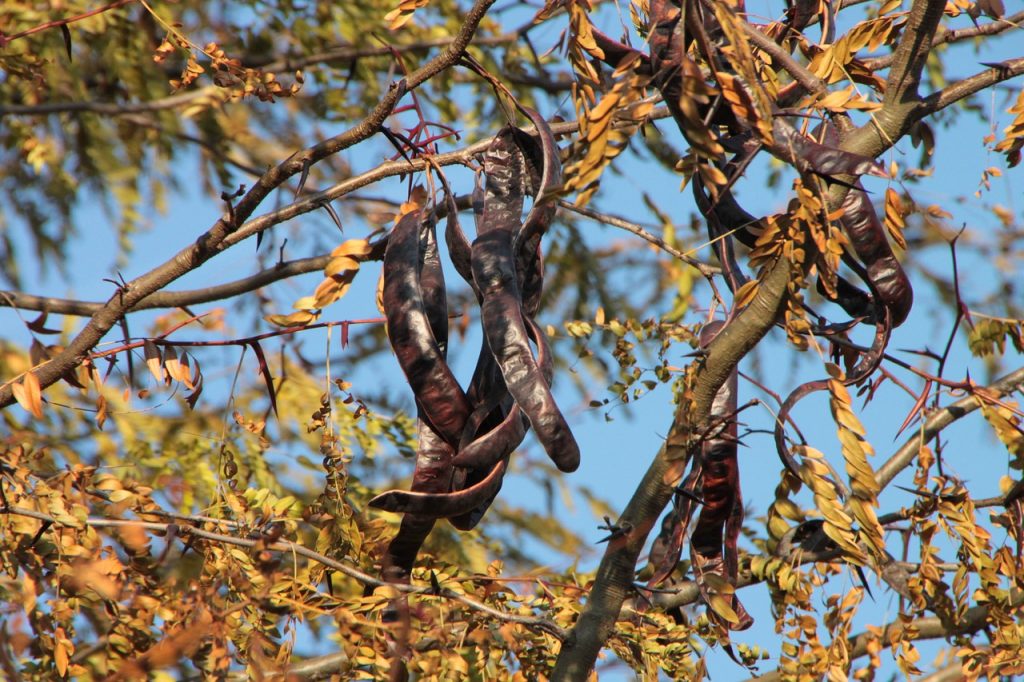Carob Tree (Ceratonia siliqua)
The Carob Tree (Ceratonia siliqua), a hardy evergreen tree, is native to the Mediterranean region and parts of the Middle East. It grows between 30 to 50 feet (9 to 15 meters) tall, with a broad, spreading crown that provides dense shade. The tree features thick, leathery, dark green leaves that are pinnate, with 6 to 10 oval-shaped leaflets, each measuring about 2 to 3 inches (5 to 7.5 cm) long. The bark is rough and dark brown, giving the tree a rugged appearance.
Carob trees produce small, inconspicuous flowers in late summer or early fall. These flowers are followed by long, flat, brown pods that can reach up to 12 inches (30 cm) in length. These pods contain sweet, edible pulp that is rich in natural sugars and is often ground into carob powder, a popular substitute for chocolate. The seeds within the pods are also notable for their uniform weight, historically used as a standard for measuring gemstones, giving rise to the term “carat.”
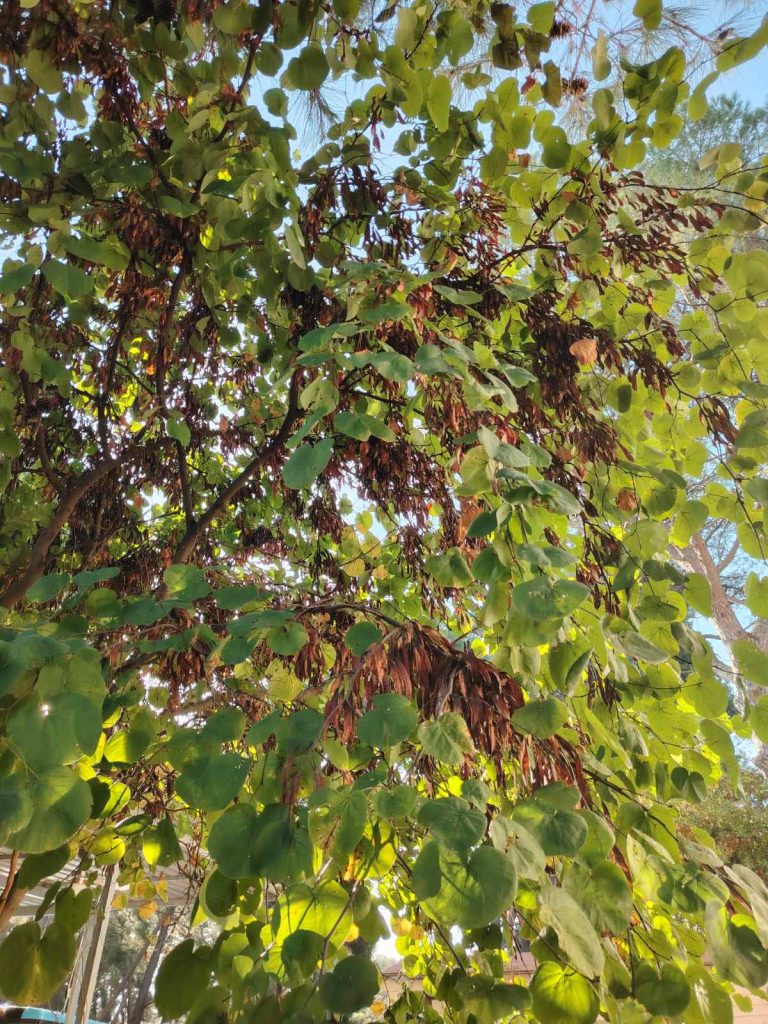
Carob trees thrive in dry, well-drained soils and are highly drought-tolerant, making them well-suited to the arid climates of the Mediterranean. They prefer full sun and can grow in various soil types, including rocky and sandy soils. The tree’s deep root system allows it to access water from deep underground, ensuring its survival during prolonged dry periods.
In addition to its economic value, the Carob Tree plays a crucial ecological role in its native habitats. It stabilizes soil in erosion-prone areas and provides food and shelter for wildlife. The tree’s pods are a vital food source for many animals, including livestock and wild species. Cultivated for its pods, timber, and as an ornamental tree, the Carob Tree also holds cultural significance in many Mediterranean societies.
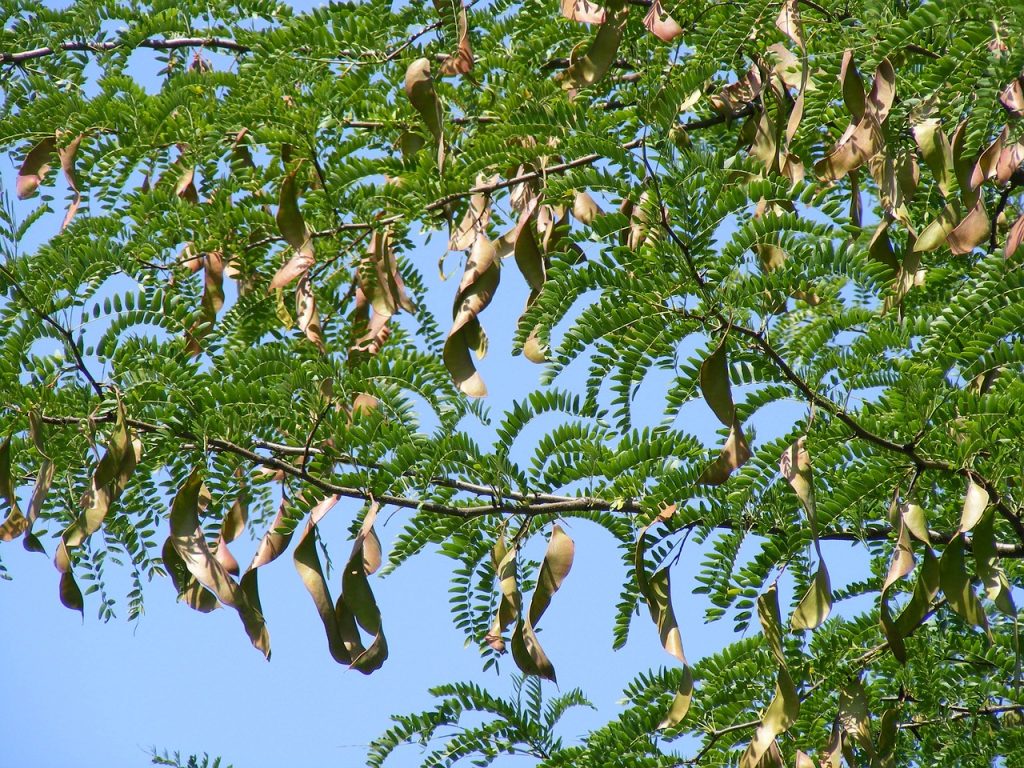
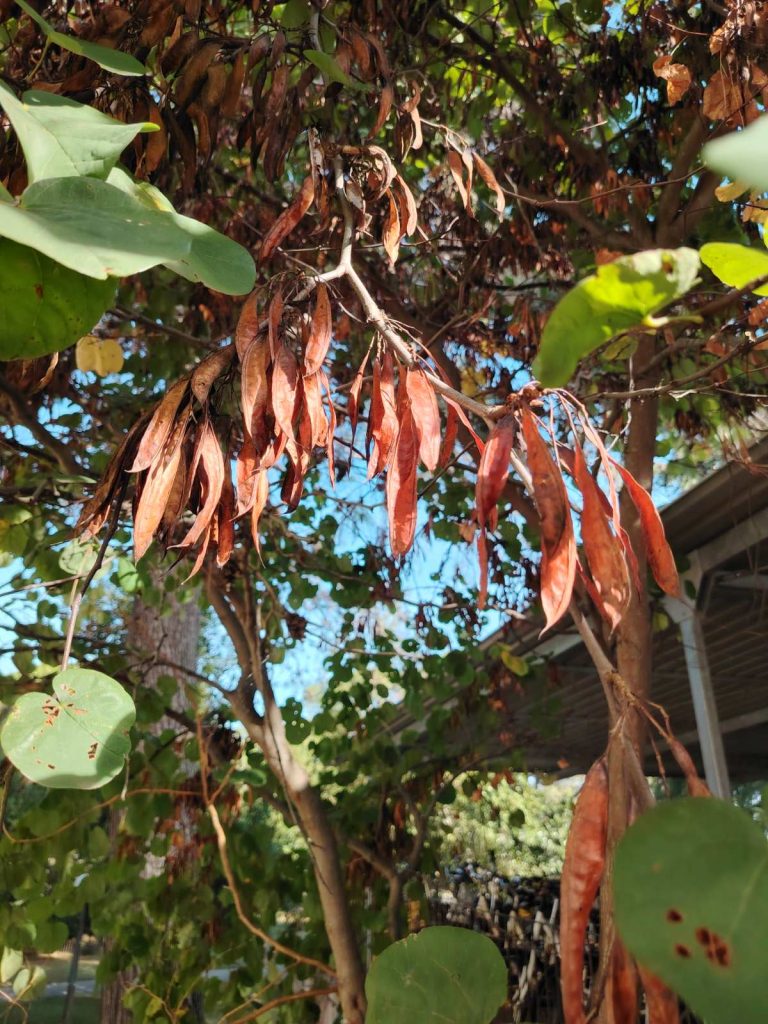
Scientific Classification of Carob Tree
| Kingdom | Plantae |
| Clade | Angiosperms |
| Clade | Eudicots |
| Order | Fabales |
| Family | Fabaceae |
| Genus | Ceratonia |
| Scientific Name | Ceratonia siliqua |
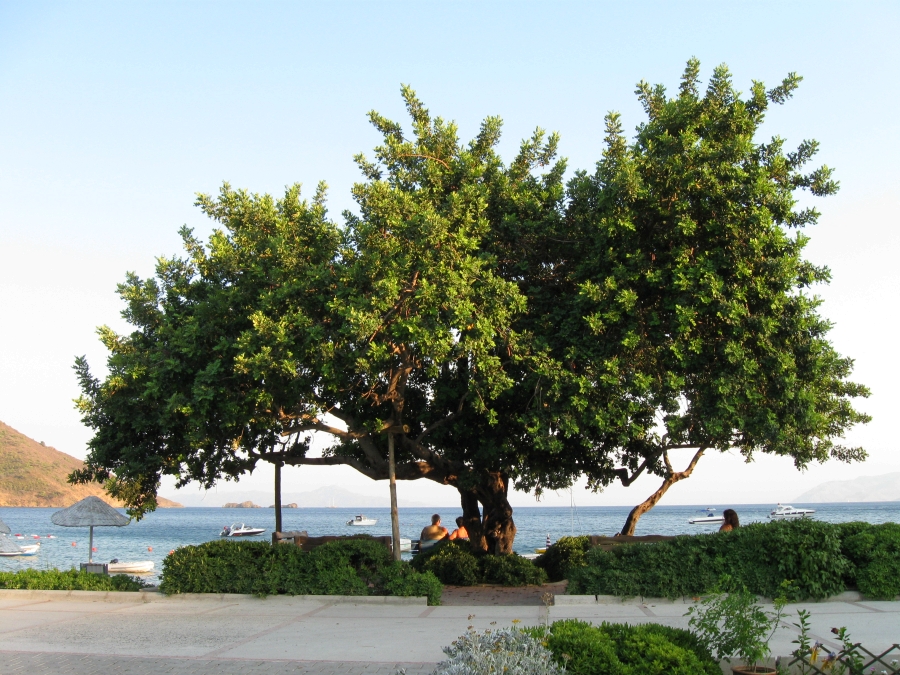
Source: Dguendel, CC BY-SA 4.0 https://creativecommons.org/licenses/by-sa/4.0, via Wikimedia Commons
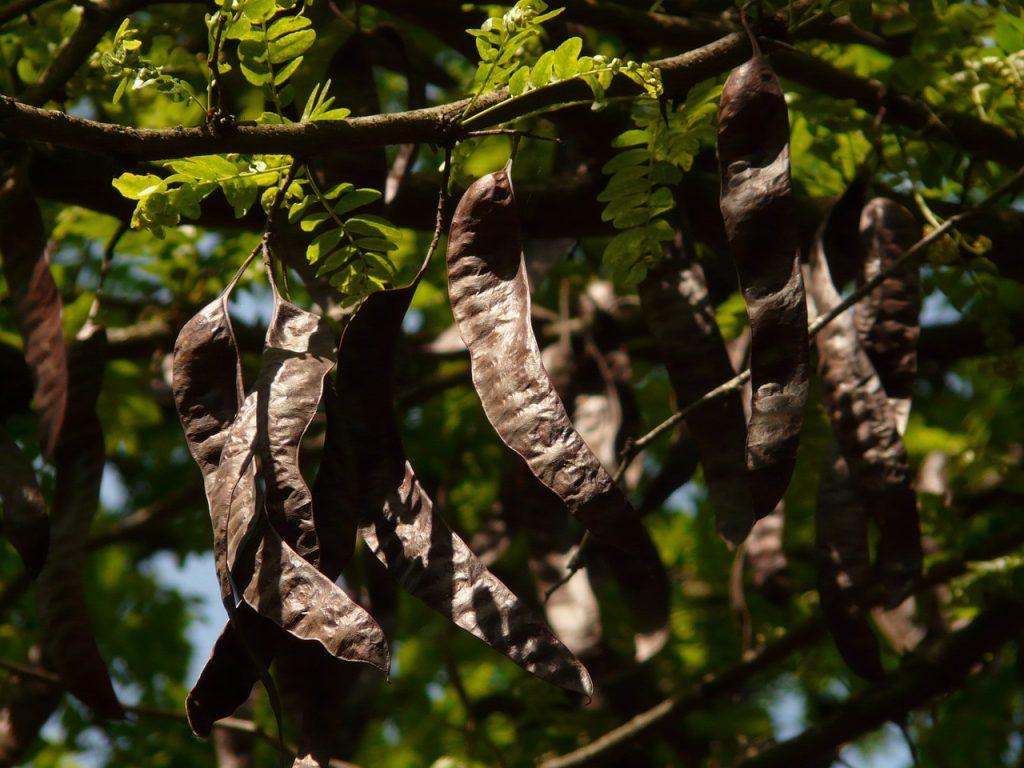
Quick Information
| Plant Type | Evergreen tree |
| Identification | Height: Typically 30 to 50 feet (9 to 15 meters) tall Leaves: Thick, leathery, dark green, pinnate with 6-10 oval leaflets Stem: Rough, dark brown bark Flowers: Small, inconspicuous, blooming in late summer or early fall Roots: Deep root system Growth Habit: Broad, spreading crown Crown: Dense and rounded |
| Distribution | Native to the Mediterranean region and parts of the Middle East |
| Habitat | Grows in dry, well-drained soils, commonly found in coastal areas and rocky hillsides |
| USDA Hardiness Zone | 9 through 11 |
| Growth Rate | Slow to moderate; typically grows about 12-24 inches (30-60 cm) per year |
| Lifespan | Long-lived; often several centuries |
| Growing Conditions | Sunlight: Full sun Soil: Well-drained, prefers dry, rocky, or sandy soils Water: Highly drought-tolerant, minimal watering needed |
| Drought Tolerance | High; well-suited to dry Mediterranean climates |
| Diseases | Resistant to most diseases; occasionally affected by root rot in poorly drained soils |
| Pests | Generally pest-resistant, but can attract scale insects and caterpillars |
| Reproductive System | Dioecious; produces separate male and female flowers on different trees |
| Propagation | Through seeds or cuttings |
| Wildlife Value | Provides food (pods) and habitat for various wildlife species, including livestock and wild animals |
| Uses | Carob pods for food products (e.g., carob powder, syrup), timber, ornamental planting |
| IUCN Conservation Status | Not currently listed as threatened; widely cultivated and managed |
